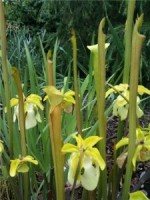 Leaves are usually green but can be yellow, red, purple or a combination of these. Leaves can be so large that they can hide a large cat or so small they can hardly be seen. They can be smooth and shiny or covered with hair. When I take the time to look carefully at leaves I can’t help but notice how many ways they differ but most are flat and carry out the job of producing food for the plant. Some leaves, however, do not fit this picture at all and, in fact, you might not even realize they are leaves. Here are a few interesting leaves that have been modified in some way so that they do not resemble the typical leaf at all.
Leaves are usually green but can be yellow, red, purple or a combination of these. Leaves can be so large that they can hide a large cat or so small they can hardly be seen. They can be smooth and shiny or covered with hair. When I take the time to look carefully at leaves I can’t help but notice how many ways they differ but most are flat and carry out the job of producing food for the plant. Some leaves, however, do not fit this picture at all and, in fact, you might not even realize they are leaves. Here are a few interesting leaves that have been modified in some way so that they do not resemble the typical leaf at all.
The most commonly seen leaf modification is related to the need of a plant for water. Plants such as pines, firs, and spruce have reduced leaves we call needles. These trees keep their leaves/needles all year long and would dry out in the winter when the soil freezes, if their leaves were broad. Through evolution the surface area of their leaves was reduced in size so that the tree can manufacture food all winter without losing too much water.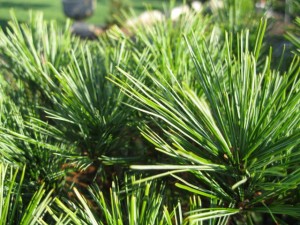
The scales of arborvitae are a similar adaptation. The scales (reduced leaves) that remain on the plant throughout the year manufacture food with only a small loss of water.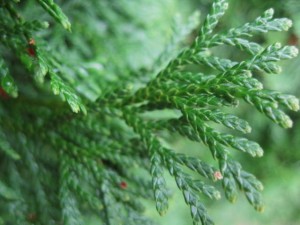
Water is so scarce in the desert that some plants, like prickly pear cactus, have leaves that have been reduced to spines. Their stems are large, green, flattened and full of special water storage tissue to carry on the food making process that the spines can not.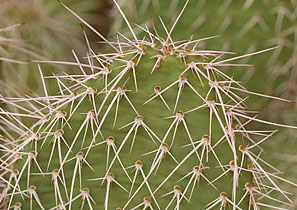
Succulents like sedum and Jade plant have adapted to dry conditions by keeping their leaves as the primary food making organ but incorporating water storage tissue in them so that the leaves appear fleshy.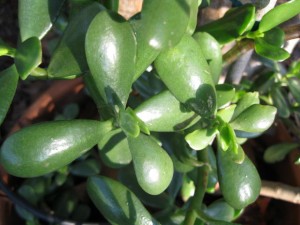
On the other end of the spectrum, water lilies and other plants living on the surface of the water have all the water they need. Their leaves have been modified so that they have large air spaces in them allowing them to float.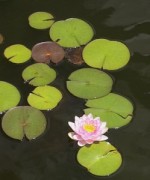
Leaves can be modified to form scales that protect the growing point of a stem.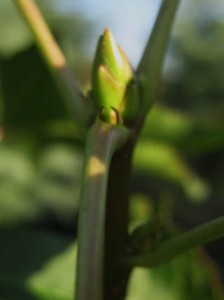
Or may be modified into a storage organ as lilies and onions bulbs have done.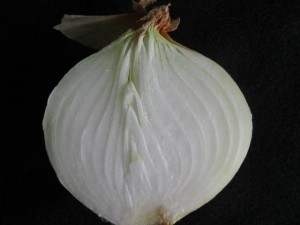
The petiole of the leaf of celery has been modified so that it is long, broad, and tasty, giving us a reason for growing it.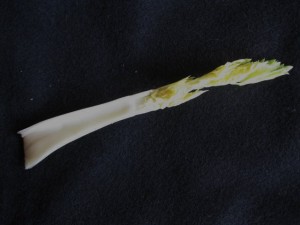
Most vines like to climb and some vines have tendrils formed from a leaf or part of it. Members of the pea family have tendrils formed from the last leaflet of their compound leaves. The tendrils twine around objects allowing the plant to cling and make their way around and upward. Not all tendrils are modified leaves, however; some, like those of cucumber, are modified stems.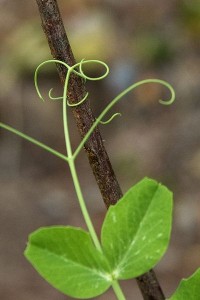
Plants like poinsettias have very small flowers and have evolved large colorful leaves we think are petals (the real petals are the small yellow objects in the center of each “flower”). Like any colorful flower petal, they attract pollinators and thereby aid the plant in reproduction, the primary function of flowers.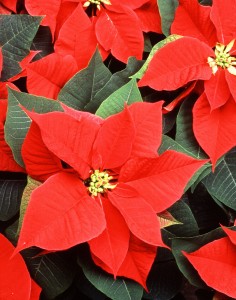
A single leaf of a calla lily or Jack-in-the-pulpit has been modified into a special petal-like organ known as the spathe. The flowers of the plant, located on the spadix, are tiny so this one modified leaf serves to attract pollinators.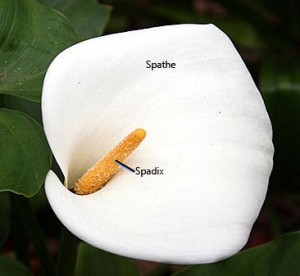
Probably the most unique modification of leaves is found among insectivorous plants. Leaves of Venus fly trap have been modified into an organs that close on unwary prey.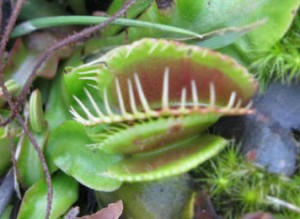
Leaves of the pitcher plant are modified into tubes with hairs that trap insects.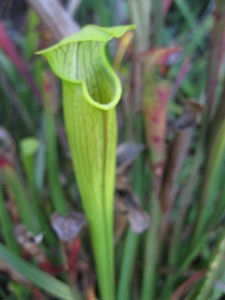
Perhaps the most interesting of the pitcher plants are the Nepenthes. The pitcher is borne from the end of a tendril that extends from the midrib of the leaf. I have seen these plants in nurseries and garden centers but they are expensive and hard to grow so I have made myself admired them from a distance and resisted the temptation to buy one.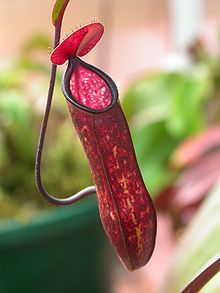
Knowing that leaves can take so many interesting forms I am always looking for a new one. The quest for a new leaf modification whenever I visit a botanical garden or nursery makes the visit all that more fun. Who knows what odd ball leaf will turn up? And then of course there are stem modifications too; but that’s another post.

[…] Botany for Gardeners: The Leaf Part II Modifications […]
i luv it…